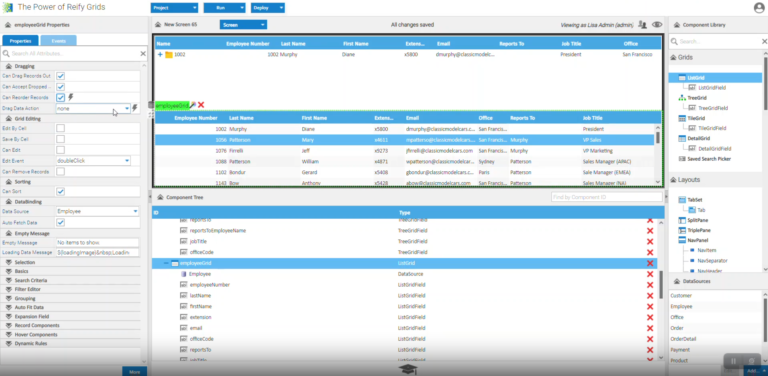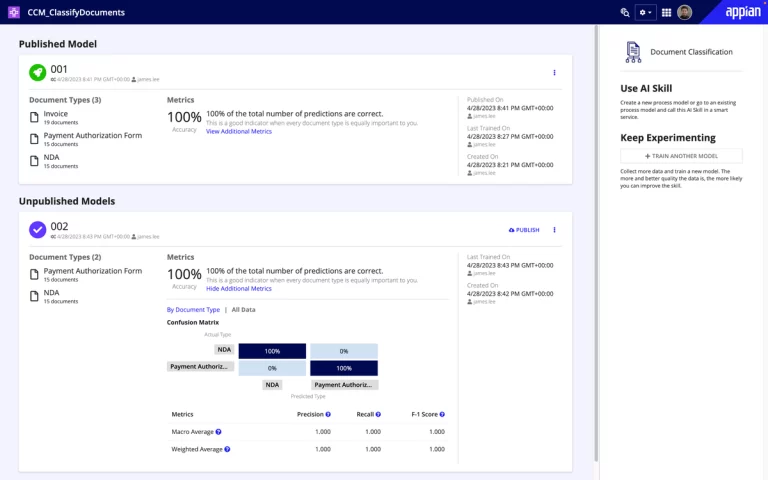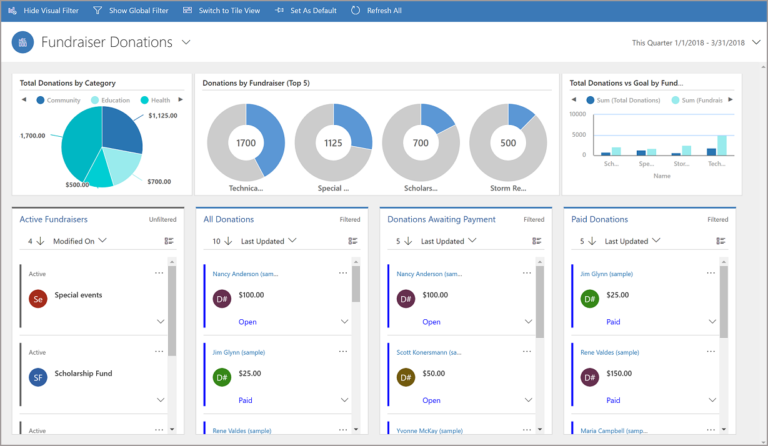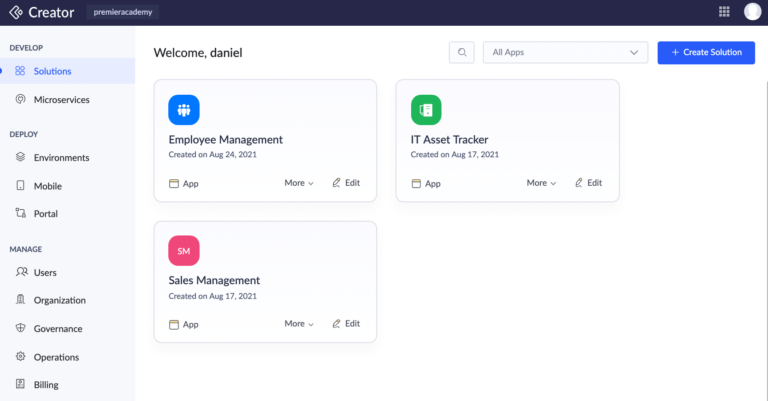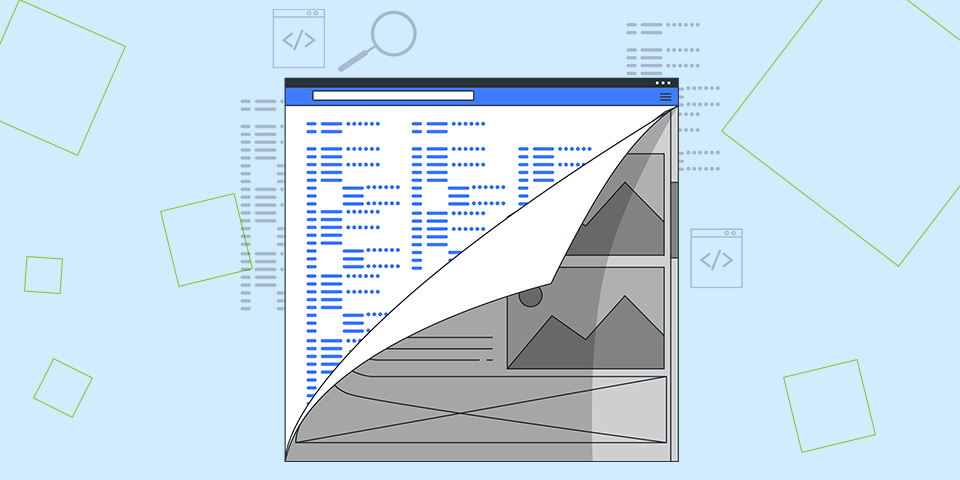The Top 5 OutSystems Alternatives

In recent years, there’s been a significant surge in the adoption of low-code platforms for enterprise applications. In fact, a Gartner survey found that over 70% of new enterprise applications will use low-code/no-code solutions by 2025. This adoption is driven by the availability of top low-code platforms that handle complex enterprise requirements.
The OutSystems low code platform has greatly influenced how businesses create complex applications. It has also helped modernize many legacy applications.
But like all low-code development platforms, OutSystems may not meet your specific enterprise’s requirements. For instance, many find it too complicated and less suitable for non-technical or business users. It can also be too expensive because of its end-user-based pricing.
Knowing the best OutSystems alternative for your enterprise needs is critical.
In this article, we will explore the top 5 OutSystems alternatives and what makes them stand out.
Reify
Reify is a low-code platform for building enterprise web applications. It’s built on top of SmartClient, the popular web application platform that has long served as a go-to choice for the most complicated applications in the world. That includes applications in banking/finance, pharma/life science, defense & government, and the logistics industry.
If you’re building an advanced application, there’s no better OutSystems alternative than Reify.
This is because Reify allows you to mix direct use of the underlying SmartClient platform with the use of Reify’s visual editing, in any way you like. That makes it literally impossible to run into platform limitations.
Reify provides a comprehensive suite of visual components for enterprise applications, all available via simple drag-and-drop visual development. Because Reify generates declarative SmartClient/SmartGWT code, you can deploy on a free, open-source platform if that’s what you need. Yet even with the freedom of open source, Reify lets you build an enterprise-grade application completely without writing a single line of code. It’s a joy to read what Reify generates – it’s startlingly simple code, and easy to imagine maintaining yourself.
A standout feature of Reify is that you can integrate Reify UIs into an IDE-based project while those same Reify screens are still fully editable in the cloud. You can even extend the functionality of Reify screens dynamically, using custom code, data connectors or components you write in a standard IDE.
This lets you use Reify for just parts of a large, complex project, even if the overall project is too complicated for a typical low-code platform. Imagine having the benefit of speedy, visual, low-code development on any project, no matter how complex – that’s Reify!
Key features of Reify
Security and Compliance
Reify is an excellent option for industries with strict compliance needs, such as HIPAA, PCI DSS, or FedRAMP. Reify allows you to deploy your application anywhere: on any public cloud, to any private cloud, or behind your corporate firewall. Your data and designs can remain within a secure, controlled network.
Pricing
The Reify pricing model is based on the number of staff that use the Reify visual design environment – not based on the number of end users (which is unlimited). If you deploy using the built-in automatically managed deployment system, you just get billed for resource usage (disk space, CPU time, and bandwidth). This is a stark contrast to other low-code platforms, which often bill on a per-end-user basis – costs that can quickly escalate as you scale! Reify’s resource-based pricing offers more cost-effective scalability and is better for building large applications.
Applicable for technical and non-technical users
Easy to use for non-developers, but with amazing power-user features as your skills develop. This makes Reify an ideal choice for teams with different skill levels to build sophisticated apps.
Hybrid development
Unlike other low-code platforms, you can integrate Reify UIs into a classic, IDE-based project. Your applications can be a combination of hand-coded screens and visually-created screens in any mix you like.
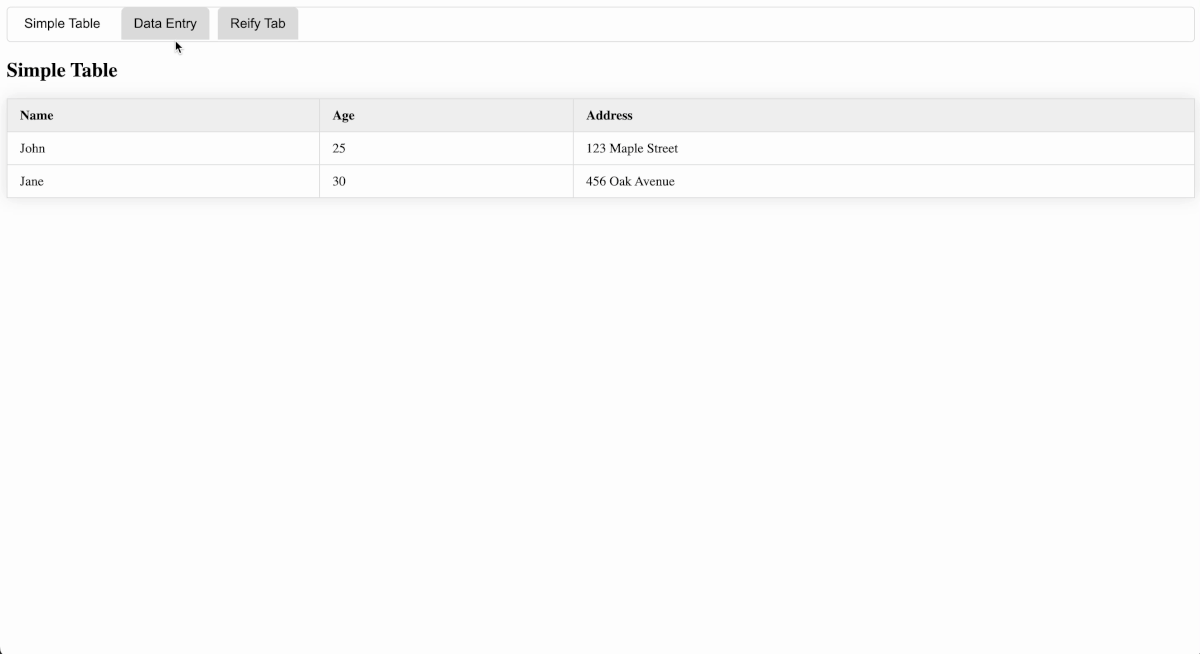
Even more remarkable, Reify enables you to incrementally modernize existing or legacy applications, regardless of which technology was originally used. Have an app built on a proprietary in-house platform, or something no one supports anymore? You can rebuild it, piecewise, with Reify.
Mendix
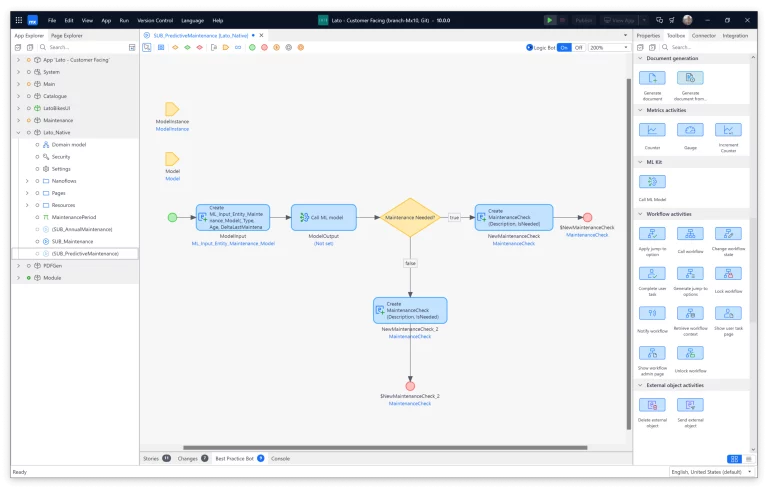
Mendix is another popular low-code platform that’s a good alternative to OutSystems. It’s a robust platform that provides comprehensive features for developing, testing, and deploying enterprise-grade applications. It also offers options for extending the platform’s features using custom code or components.
Mendix offers managed deployment options with minimum headaches, along with analytics and monitoring tools. Unlike most other low-code platforms, Mendix offers the ability to deploy to arbitrary locations. This is similar to Reify, although not quite as flexible: Mendix requires various Mendix-provided server infrastructure, and doesn’t offer a pure open-source deployment approach like Reify. However, overall, in terms of flexibility, Mendix earns top marks – second only to Reify.
Similar to Outsystems, Mendix’s pricing is generally based on per end-user-per-month, and is also tiered based on feature requirements. When you have a smaller number of end-users and a limited number of features, the prices can be pretty low. However, this can quickly escalate if you have multiple apps/users/feature requirements. Still, it’s worth noting that Mendix has earned a reputation for offering flexible pricing – if you negotiate!
Key features of Mendix
Collaborative development environment
Mendix comes with built-in project management features that help with collaboration between business and dev teams.
Extensive integration
Mendix offers pre-built integrations with many business platforms, including SAP, Azure, Salesforce, IBM Cloud, etc.
Great Community
Mendix has a “marketplace” of third-party extensions. This won’t necessarily mean much to teams that are trying to innovate and create something new, but if your app is rather “cookie-cutter”, the Mendix community is a very important resource!
Appian
Appian is a top low-code platform for business workflow automation and case management. It’s a great alternative to OutSystems for businesses looking for a simple platform to handle business processes.
The user-friendly visual interface of Appian makes it suitable for less technical teams and citizen developers. However, professional developers may find it quite limiting. It may not necessarily cover all the complexities they expect from platforms like OutSystems, Reify, and Mendix.
Key features
Business automation
Appian has fully developed features for process automation, case management, and business process management (BPM). These features can help businesses save time and enable higher productivity.
User-friendly visual editor and drag-and-drop components
Appian is highly user-friendly, which is perfect for citizen developers and business users.
Low-code development governance
It enables you to develop a framework for governing development and deployments.
Power Apps
Power Apps, a low-code platform from Microsoft, is another OutSystem alternative to consider, depending on your business requirements.
Perhaps the single strongest feature of Power Apps is application templates. If your application happens to match one of the Power Apps templates closely, you can just replace the content and data from the template to create simple business apps for your needs.
As a platform integrated into the Microsoft suite, it’s easy to incorporate Microsoft’s pre-built component, as well as to integrate with Microsoft platforms like Outlook. It’s also easy to find certified engineers who can help you do this, because you can tap Microsoft’s enormous community. If you’re already heavily leveraging Microsoft technology, PowerApps is worth a close look.
Key features
Integrated Microsoft software suite
The integrations with other Microsoft business platforms make it a suitable option for anyone.
Highly extensible
Offers hundreds of pre-built connectors for integrating disparate data across many platforms. It also integrates perfectly with enterprise services like Adobe Creative Cloud, Jira, Slack, Dropbox, and Google Drive.
Zoho Creator
Zoho Creator is a low-code app development platform for business applications. It’s a good option for those familiar with other applications within the Zoho suite. They can easily leverage its integration to build internal tools for businesses.
However, Zoho requires knowledge of its proprietary scripting language, even to customize it. This makes it unsuitable for applications with complex requirements.
Key features
Zoho ecosystem integration
Zoho Creator integrates with other Zoho apps, such as Zoho Books, Zoho Analytics, and Zoho People. It also provides an extensive list of integrations with other third-party apps.
Pre-built templates
Provides several pre-built business applications and templates.
Robust analytics features
You can easily create reports, forms, and dashboards using Zoho Analytics by simply importing or syncing your application data.
Summary
There are several OutSystems alternatives but the best choice for you will depend on your business requirements.
If you’re laser-focused on automating a simple, multi-party business process, Appian is worth a close look.
For simpler business apps that don’t necessarily fit the Appian model, Zoho, and Microsoft Power Apps are good options, with Power Apps being typically the better choice for those already invested in the Microsoft ecosystem.
For enterprise applications, Reify and Mendix offer comprehensive features for complex enterprise needs. Both are great choices, and a lot comes down to pricing, as well as the degree of flexibility you need. Mendix offers a great community and fabulous managed deployments, while Reify offers maximum flexibility & power for complex apps, as well as longevity (they are older than Google!).
Whatever you pick, we wish you well in your low-code adventure. However, if you want to start building your applications on the Reify platform, then get started here!
Get a demo of Reify
Experience a live demonstration of the Reify low-code platform customized to your specific needs!
